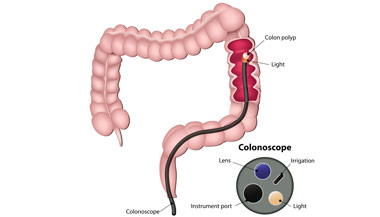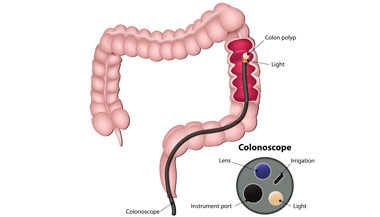Anorectal Manometry
If you have constipation, fecal incontinence or other problems related to bowel movements, your doctor may recommend anorectal manometry to evaluate the causes.
What You Need to Know
- Anorectal manometry is a noninvasive procedure to evaluate the function of the rectal and anal muscles.
- Anorectal manometry is a fairly simple test and does not require anesthesia.
- The test usually takes about 30 minutes.
What is anorectal manometry?
Anorectal manometry is a noninvasive procedure to evaluate the function of the rectal and anal muscles. This group of muscles, called the anorectal sphincter, controls how stool is released from your body. Anorectal manometry can help determine if these muscles are too loose, too tight or are not engaging at the right moment. This test measures the pressures created by the muscles, the sensation in the rectum (the passageway between the large intestine and the anus), and the neural reflexes necessary for normal bowel movements.
Who may need anorectal manometry?
Having a bowel movement requires cooperation between specialized muscles and nerves in the rectum and anal canal. Normally, when stool enters the rectum, the anal sphincter muscles tighten to prevent passage of stool until you can get to a toilet. If these muscles are weak or do not contract in a timely way, fecal incontinence (leakage of stool) may occur. Similarly, when you push to have a bowel movement, the anal sphincter muscles relax to allow stool to exit. If they tighten instead, this could contribute to constipation.
Anorectal manometry tests these functions and helps diagnose conditions such as fecal incontinence and constipation. If you have ongoing problems with bowel movements, your doctor may recommend anorectal manometry.
Anorectal manometry can also be used to evaluate people with:
- Malformations or injuries of the anus or rectum affecting nearby nerves or muscles.
- Hirschsprung’s disease, a condition that is present at birth, and affects the muscles of the bowel.
- Irritable bowel syndrome, a condition that involves both diarrhea and constipation.
- Rectal cancer if it was treated with procedures that affect the function of anorectal muscles.
What happens during anorectal manometry?
Anorectal manometry is a fairly simple test and does not require anesthesia. The equipment to perform this test usually includes:
- A catheter with a balloon on the end that gets inserted into the anus and rectum.
- A device connected to the catheter that allows a technician to change the pressure in the balloon by inflating and deflating it, usually with air.
- Computer software connected to the pressure device that controls the test settings and records data from the balloon.
The test usually takes about 30 minutes. Before the procedure, you will need to make sure your digestive tract is empty. Your doctor may recommend using one or more over-the-counter enemas at home before the test.
- You will need to undress from the waist down or change into a hospital gown, as instructed by the technician or nurse performing the test. A technician will explain the procedure, take a brief health history and answer your questions.
- You lie down on your left side and bring your knees up into a fetal position.
- Before starting the anorectal manometry test, the technician may first perform a digital rectal exam by inserting a gloved finger into the anus to feel for abnormalities.
- A small, flexible, lubricated tube, about the size of a thermometer, with a deflated balloon at the end is inserted into the rectum. The tube is connected to a machine that measures pressure.
- The technician will position the balloon at various depths inside the rectum and take several benchmark pressure readings.
- The technician will then inflate the balloon to a certain size and ask you to squeeze, relax, push or cough for brief intervals of time. These activities are repeated with different balloon sizes or positions in the rectum. The anal sphincter muscle pressures are measured each time.
- To squeeze, you tighten the sphincter muscles as if trying to prevent anything from coming out. Coughing also contracts your anal sphincter.
- To push or strain, you bear down as if you are trying to have a bowel movement.
- The technician might also ask you if the sensation in your rectum changes with different balloon sizes. You will need to say when it feels like you need to have a bowel movement.
-
When the test is finished, the technician deflates and removes the balloon.
-
After the examination, you may drive yourself home and go about your normal activities.
Anal Manometry Test Results
Test results can help your doctor identify the cause of constipation or incontinence and inform a treatment plan.
For instance, the test may reveal weak anal sphincter muscles or poor sensation in the rectum that can contribute to fecal incontinence. These problems can be treated. Biofeedback techniques using anal manometry and special exercises of the pelvic floor muscles can strengthen the muscles and improve sensation.
Test results may show that the anal sphincter muscles do not relax appropriately when you are pushing to have a bowel movement, which may cause constipation. These muscles, too, can be retrained with biofeedback techniques.
Risks and Complications of Anorectal Manometry
Anorectal manometry is a safe, low-risk procedure and complications are rare. Equipment failure is a remote possibility. People who are allergic to latex should inform the nurse or technician before the test.






